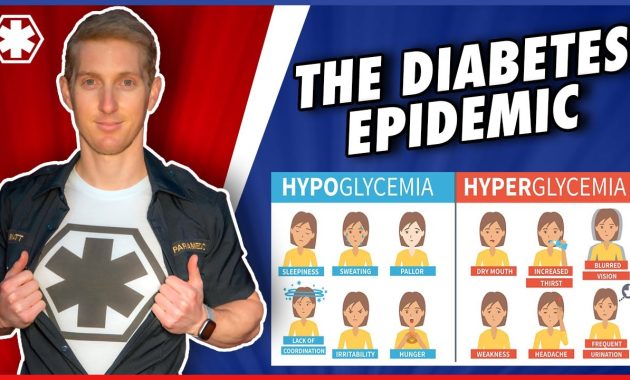
Diabetes Emergency Plan: What You Must Know to Stay Safe
Living with diabetes requires constant vigilance. It also demands proactive planning. A diabetes emergency can strike unexpectedly. Knowing how to respond is crucial. This article provides a comprehensive diabetes emergency plan. It will equip you with the knowledge to manage crises. This plan can save lives. It will also minimize complications. We’ll cover everything from recognizing symptoms to effective treatments.
Understanding Diabetes Emergencies
Diabetes is a chronic condition. It affects how your body processes sugar (glucose). Glucose is your primary energy source. When you have diabetes, your body either doesn’t produce insulin. Or it doesn’t use insulin effectively. Insulin is a hormone that regulates blood sugar levels. This can lead to several dangerous situations. These situations require immediate attention. They include hypoglycemia and hyperglycemia. They also include diabetic ketoacidosis (DKA) and hyperglycemic hyperosmolar syndrome (HHS).
Hypoglycemia (Low Blood Sugar)
Hypoglycemia occurs when blood sugar drops too low. It’s often below 70 mg/dL. This can happen for several reasons. These include too much insulin or diabetes medication. It can also be caused by skipping meals. Or it can be caused by increased physical activity. Symptoms of hypoglycemia can appear quickly. They can include shakiness, sweating, and dizziness. Other symptoms include confusion, blurred vision, and even seizures. Untreated hypoglycemia can lead to loss of consciousness. It can even be fatal. A well-structured diabetes emergency plan addresses this.
Hyperglycemia (High Blood Sugar)
Hyperglycemia is when blood sugar levels are too high. It is typically above 180 mg/dL. This can be caused by several factors. They include not taking enough insulin or diabetes medication. It can also be caused by eating too many carbohydrates. Or it can be caused by illness or stress. Symptoms of hyperglycemia develop gradually. They include increased thirst, frequent urination, and fatigue. Other symptoms include blurred vision and slow-healing sores. If left untreated, hyperglycemia can lead to serious complications. These complications include DKA and HHS.
Diabetic Ketoacidosis (DKA)
DKA is a severe complication of diabetes. It primarily affects people with type 1 diabetes. It can also affect people with type 2 diabetes. It occurs when the body doesn’t have enough insulin. The body then starts breaking down fat for energy. This produces ketones. Ketones are acids that build up in the blood. Symptoms of DKA include nausea, vomiting, and abdominal pain. Other symptoms include fruity-smelling breath and confusion. DKA is a life-threatening condition. It requires immediate medical attention.
Hyperglycemic Hyperosmolar Syndrome (HHS)
HHS is another serious complication of diabetes. It typically affects people with type 2 diabetes. It’s characterized by extremely high blood sugar levels. It also involves severe dehydration. Symptoms of HHS include extreme thirst, frequent urination, and confusion. Other symptoms include drowsiness and vision changes. HHS can lead to coma and death. Prompt medical treatment is essential.
Creating Your Diabetes Emergency Plan
A comprehensive diabetes emergency plan is essential. It should cover various aspects of managing diabetes. It should also include responding to emergencies. This plan should be personalized. It should be tailored to your specific needs and circumstances. Here’s a step-by-step guide to creating your plan.
Step 1: Gather Essential Information
Start by collecting vital information. This information will be critical in an emergency. Keep a readily accessible document. Include the following:
- Your full name, date of birth, and contact information.
- The name and contact information of your healthcare providers.
- A list of all your medications. Include dosages and administration times.
- Details of your diabetes type and current treatment plan.
- Any known allergies or medical conditions.
- Emergency contact information. Include family members and friends.
Make copies of this information. Keep one copy with you at all times. Keep another copy at home. Also, share a copy with trusted family members or friends.
Step 2: Recognize the Symptoms
Knowing the symptoms of a diabetes emergency is crucial. Regularly review the signs of hypoglycemia, hyperglycemia, DKA, and HHS. Practice recognizing these symptoms. This will help you act quickly and effectively.
Step 3: Prepare Emergency Supplies
Assemble a diabetes emergency kit. This kit should contain essential supplies. Keep this kit readily available. Include the following:
- A blood glucose meter and test strips.
- A source of fast-acting carbohydrates. Examples include glucose tablets or juice.
- Glucagon for injection. This is used to treat severe hypoglycemia.
- Insulin or other diabetes medications. Include syringes or insulin pens.
- Ketone test strips. Use them to check for ketones in your urine.
- Identification. Wear a medical ID bracelet or necklace. Carry a medical ID card.
- Phone. This is for emergency calls.
Check the expiration dates of all supplies regularly. Replace any expired items promptly.
Step 4: Develop Action Plans
Create specific action plans for different emergencies. These plans should be easy to understand. They should also be easy to follow. Here are some examples:
Hypoglycemia Plan
- Check your blood sugar. If it’s below 70 mg/dL, treat it immediately.
- Consume 15 grams of fast-acting carbohydrates. Examples include glucose tablets or juice.
- Wait 15 minutes. Then, recheck your blood sugar.
- If your blood sugar is still low, repeat the treatment.
- Once your blood sugar is back to normal, eat a meal or snack.
- If you lose consciousness, someone should administer glucagon.
- Call emergency services if glucagon is needed.
Hyperglycemia Plan
- Check your blood sugar. If it’s high, check for ketones.
- Drink plenty of fluids to stay hydrated.
- Administer insulin as prescribed.
- Monitor your blood sugar regularly.
- If you have ketones in your urine, and blood sugar remains high, seek medical attention.
- Call emergency services if you experience symptoms of DKA or HHS.
DKA and HHS Plan
- Seek immediate medical attention.
- Call emergency services or go to the nearest emergency room.
- Do not attempt to treat these conditions at home.
Step 5: Educate Your Support Network
Inform your family, friends, and colleagues about your diabetes. Educate them about your emergency plan. Show them how to recognize the symptoms of a diabetes emergency. Teach them how to administer glucagon. Ensure they know your emergency contact information. Regular communication is key to a successful support network.
Step 6: Practice and Review
Regularly review your diabetes emergency plan. Practice recognizing symptoms. Practice administering glucagon. Ensure that everyone in your support network knows their roles. Update your plan as needed. This might be due to changes in your treatment. It might also be due to changes in your personal circumstances. This ensures it remains effective.
Responding to a Diabetes Emergency
When a diabetes emergency occurs, time is of the essence. Quick and decisive action can save your life. Or it can prevent serious complications. Here’s what to do:
Stay Calm
Remain calm. Panic can cloud your judgment. Take deep breaths. Focus on following your emergency plan.
Assess the Situation
Determine the cause of the emergency. Check your blood sugar. Look for other symptoms. Assess the severity of the situation.
Follow Your Action Plan
Implement the appropriate action plan. Administer treatment as prescribed. Call emergency services if needed.
Seek Immediate Medical Attention
Do not hesitate to seek medical attention. Go to the nearest emergency room. Or call emergency services. Don’t delay if you have severe symptoms. This is also true if you’re unsure of the cause of the emergency. Early intervention is crucial.
Communicate Effectively
Provide clear and concise information to medical professionals. Tell them about your diabetes. Share your medical history. Also, share your current medications. This will help them provide the best possible care.
Preventing Diabetes Emergencies
Prevention is key to managing diabetes effectively. It can also prevent emergencies. Here are some tips to prevent diabetes emergencies:
Regular Blood Sugar Monitoring
Monitor your blood sugar regularly. Follow your healthcare provider’s recommendations. Keep a log of your blood sugar readings. Note any patterns or trends. This will help you identify potential problems early.
Adhere to Your Treatment Plan
Take your medications as prescribed. Follow your meal plan. Exercise regularly. Manage your stress levels. Consistency is crucial to maintaining stable blood sugar levels.
Educate Yourself
Learn as much as you can about diabetes. Understand the causes of diabetes emergencies. Know how to prevent and treat them. The more you know, the better prepared you will be.
Carry Identification
Always carry a medical ID. Wear a medical ID bracelet or necklace. This will alert others to your condition. It will also provide essential information in an emergency.
Be Prepared for Travel
If you travel, take extra precautions. Pack all your diabetes supplies. Include extra insulin. Also, bring snacks and fast-acting carbohydrates. Carry a copy of your diabetes emergency plan. Inform your travel companions about your condition.
Conclusion
A well-prepared diabetes emergency plan is not optional. It is a necessity. It can be the difference between a manageable situation. Or it can be the difference between a life-threatening crisis. By following the steps outlined in this article, you can create a plan. You can also be prepared to respond effectively. Remember, knowledge is power. Proactive planning is essential to living well with diabetes. Prioritize your health. Take control. Build a diabetes emergency plan today. You are also protecting yourself.
[See also: Related Article Titles]

